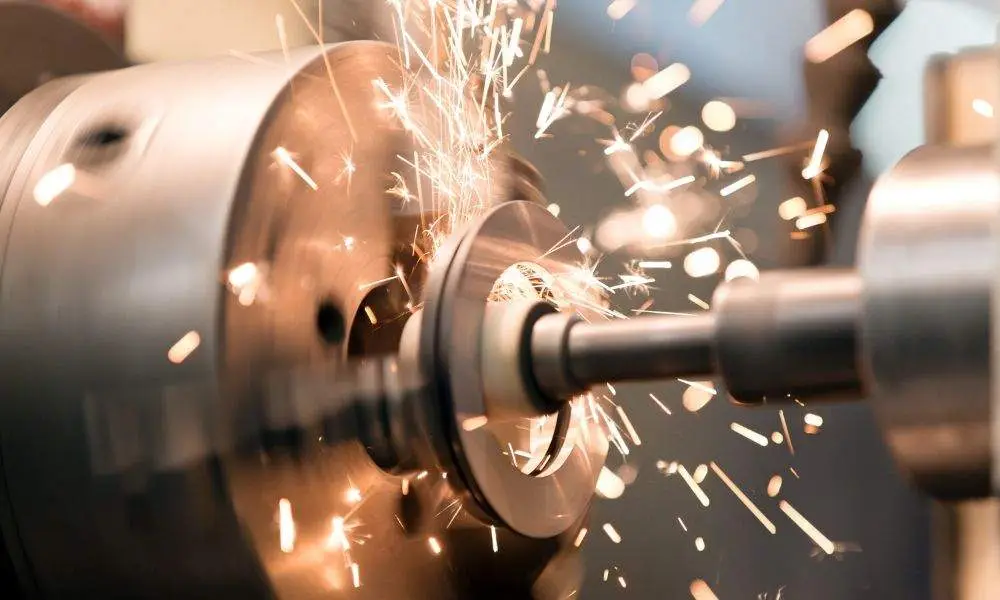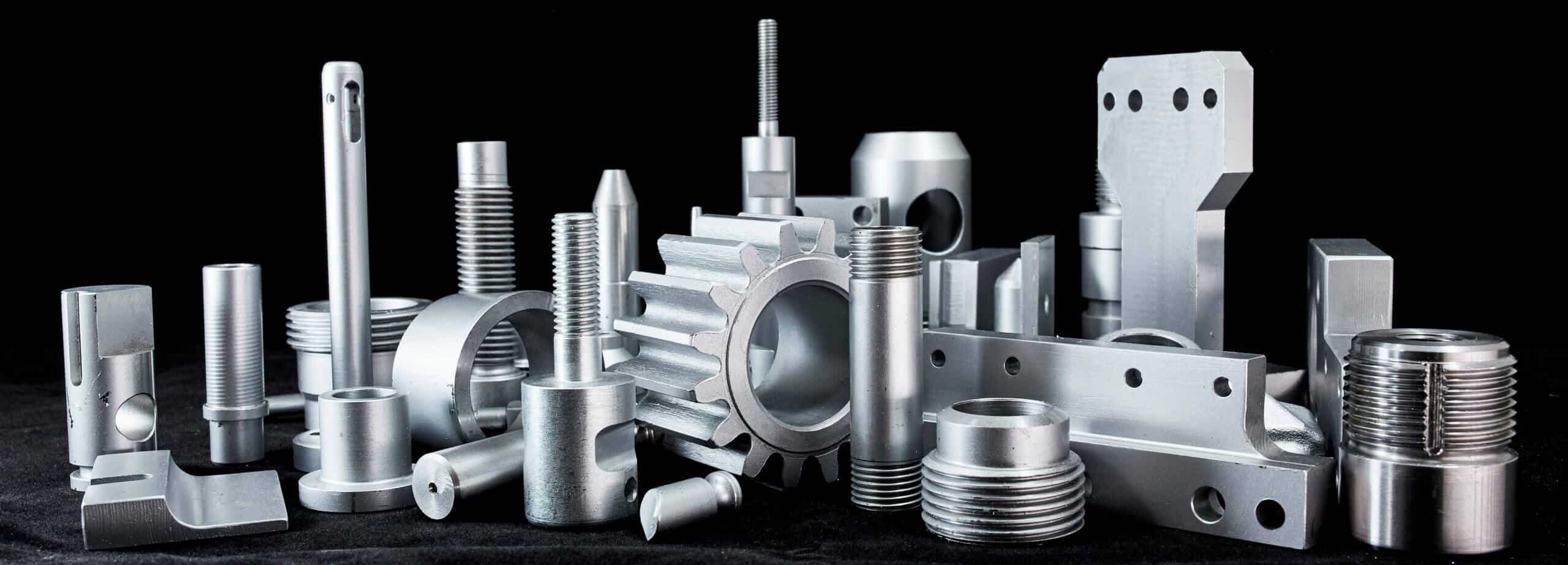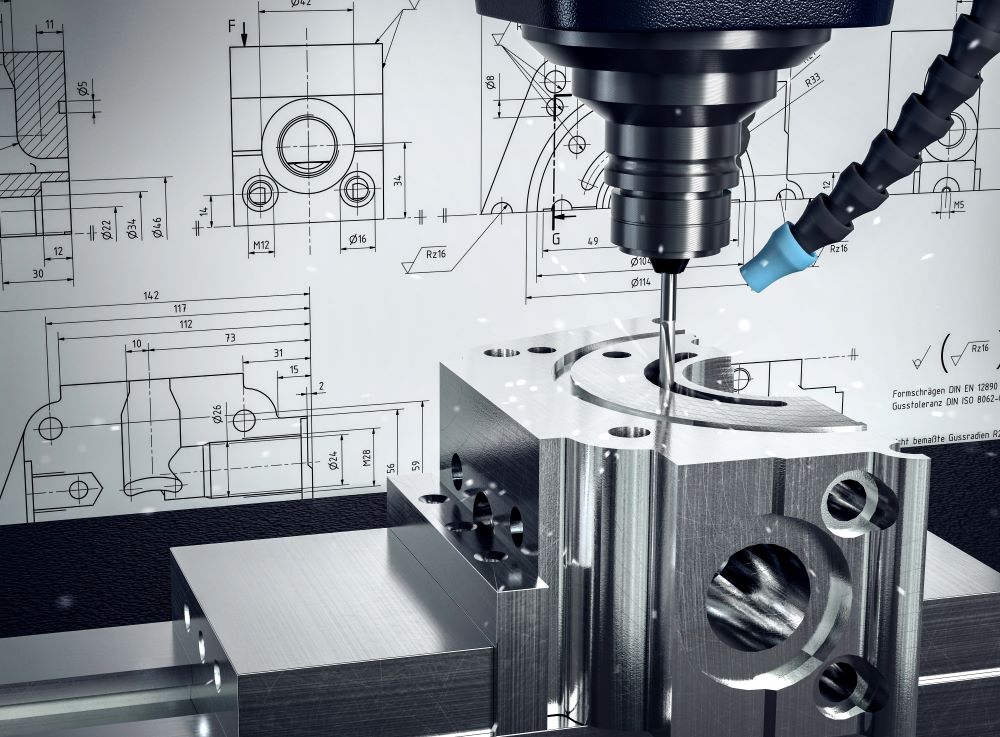Fasteners and Machining: Secret to Effective and Trustworthy Manufacturing
Fasteners and Machining: Secret to Effective and Trustworthy Manufacturing
Blog Article
Unveiling the Intricacies of Bolts and Machining Processes for Optimum Efficiency
In the realm of engineering and production, the choice of bolts and the intricacies of machining procedures play an essential function in identifying the ultimate efficiency and resilience of a product. From the seemingly uncomplicated task of picking the appropriate type of bolt to the complex accuracy machining strategies utilized, every step in this process demands thorough focus to detail. As we start this exploration into the world of fasteners and machining, we will certainly discover the refined yet vital factors that can substantially impact the effectiveness and top quality of the end product, shedding light on the commonly overlooked elements that can make all the distinction in achieving ideal efficiency.

Importance of Correct Bolt Choice
Selecting the appropriate bolts is critical in making certain the architectural stability and longevity of any kind of mechanical setting up. Bolts play an essential function in holding elements together firmly, with the ideal choice adding substantially to the overall efficiency and dependability of the setting up. When choosing bolts, variables such as material compatibility, environmental problems, load-bearing capability, and ease of installment need to be very carefully considered to assure ideal efficiency.
Incorrect fastener choice can lead to a variety of problems, consisting of loosening, deterioration, and even architectural failure. Making use of bolts that are not suited to the certain requirements of the setting up can compromise its capability and position safety dangers. Designers and developers need to meticulously examine the application requires and select fasteners that satisfy or go beyond the required requirements and requirements.
Additionally, the right bolt option process includes analyzing the joint design, expected tons, resonance degrees, and potential thermal growth or tightening to ensure that the selected bolts can hold up against the operating conditions successfully. By focusing on correct bolt option, suppliers can enhance the quality, longevity, and efficiency of their mechanical settings up.
Types and Attributes of Bolts
A vital element of mechanical assemblies lies in understanding the diverse types and unique characteristics of fasteners made use of in numerous industrial applications. Bolts are critical parts that hold frameworks with each other, making certain security and performance.
Screws are threaded fasteners that are commonly utilized to join 2 or even more components together. Screws are comparable to screws however are typically made use of with a nut to produce a secure joint. Nuts are inside threaded fasteners that mate with screws to hold components with each other. Washers are slim plates that distribute the lots of a fastener, protecting against damage to the material being secured. Rivets are permanent bolts that are hammered or pushed right into place. Pins are utilized for placement or to protect parts briefly.
Comprehending the characteristics of each kind of fastener is vital for picking the right one for a specific application, guaranteeing ideal efficiency and integrity of the mechanical setting up. Fasteners and Machining.
Accuracy Machining Techniques for Effectiveness
The intricate style requirements of numerous fasteners demand utilizing accuracy machining methods for optimum effectiveness in manufacturing processes. One of the key strategies used in accuracy machining is Computer Numerical Control (CNC) machining, which allows high degrees of accuracy and repeatability in the manufacturing of fasteners.
In enhancement to CNC machining, other accuracy methods such as grinding, milling, and transforming are frequently site used to attain the tight tolerances needed for fasteners. These methods allow makers to create bolts with smooth surface areas, accurate measurements, and high structural stability. By making use of precision machining strategies, manufacturers can improve the quality of fasteners, reduce material waste, and boost total production effectiveness. In addition, using advanced machining processes aids guarantee that bolts meet industry requirements and consumer expectations for performance and dependability.

Aspects Influencing Machining Process Performance
Different variables play a substantial duty in establishing the performance of machining processes in the manufacturing of fasteners. Optimizing these parameters based on the particular demands of the fastener being created is essential to accomplishing economical and exact machining.
Maker strength and security likewise play a critical duty in establishing machining procedure efficiency. A steady device with very little vibrations can enhance precision and prevent tool wear, causing far better total performance. The ability and experience of the maker operator can not be ignored. A well-informed operator can make real-time changes, troubleshoot concerns effectively, and ensure that the machining procedure runs efficiently, ultimately affecting the last high quality of the fastener.

Quality Assurance Steps in Manufacturing
Elements influencing machining process efficiency, such as reducing tool selection and device stability, directly impact the implementation of quality assurance steps in manufacturing. Quality control steps are crucial in guaranteeing that products satisfy the needed specifications and criteria. In the manufacturing process, numerous strategies are used to preserve high quality standards. Evaluation and testing play a crucial role in identifying any kind of variances from the preferred outcome. Normal upkeep of machining devices is also essential to promote quality assurance. Calibration of machines and tools is essential to make certain exact and exact manufacturing procedures. Furthermore, implementing standard operating procedures and protocols can help in keeping consistency and quality throughout the assembly line. Quality control gauges not only concentrate on the end item but additionally on every stage of the production process to avoid issues and errors. By adhering to strict high quality control procedures, makers can boost client contentment, construct a track record for integrity, and ultimately achieve ideal performance in their machining processes.
Final Thought
Finally, picking the appropriate bolts and making use of accuracy machining techniques are important for ideal performance in producing processes. Comprehending the types and attributes of fasteners, together with aspects influencing machining process about his performance, can result in improved efficiency and quality control steps. By taking notice of these complexities, manufacturers can achieve higher degrees of efficiency and dependability in their products.
In the realm of engineering and manufacturing, the choice of fasteners and the complexities of machining processes play a pivotal duty in figuring out the utmost performance and resilience of a product (Fasteners and Machining). One of the key methods utilized in precision machining is Computer system Get More Information Numerical Control (CNC) machining, which allows high levels of precision and repeatability in the manufacturing of fasteners. The use of advanced machining procedures assists ensure that bolts satisfy industry criteria and client assumptions for efficiency and reliability
In verdict, choosing the best bolts and using accuracy machining methods are vital for optimal efficiency in manufacturing procedures. Understanding the kinds and qualities of bolts, along with aspects influencing machining procedure performance, can lead to enhanced efficiency and high quality control measures.
Report this page